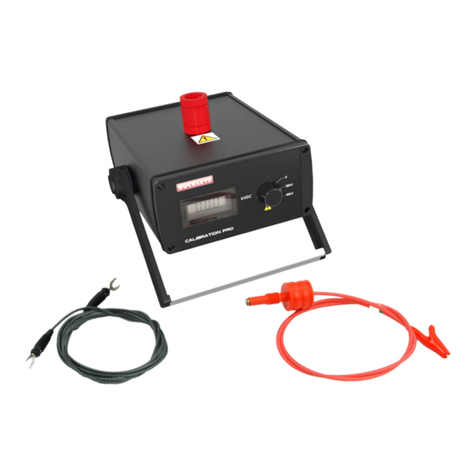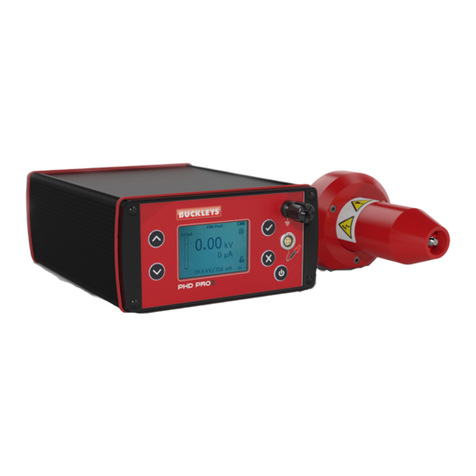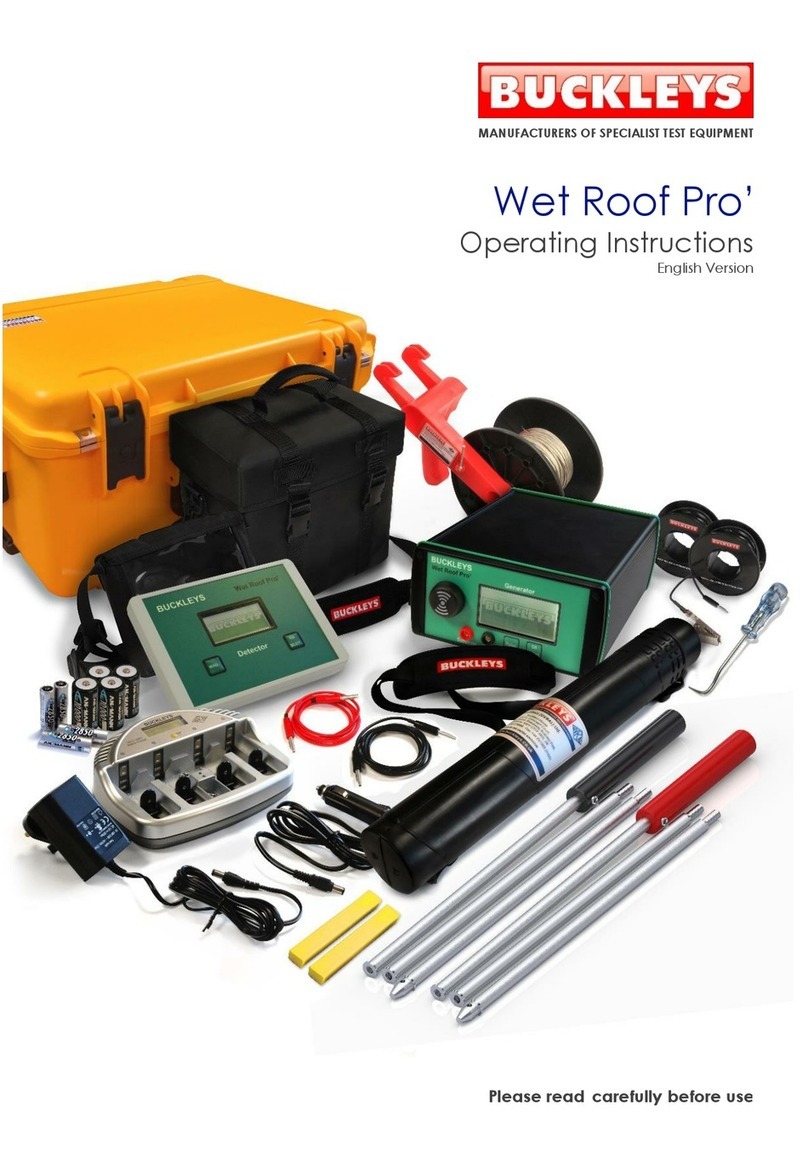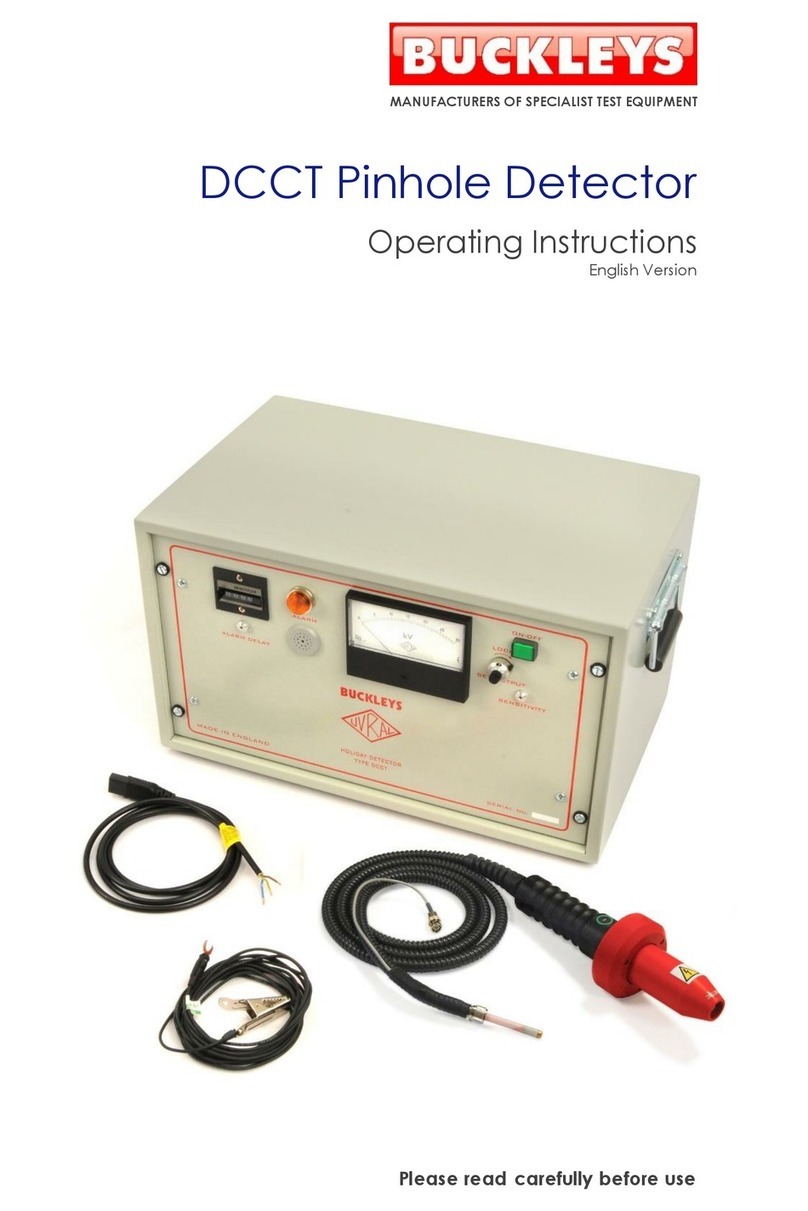Safety precautions
All high voltage testing equipment should be operated by responsible
authorised personnel only.
The output voltage of this equipment is derived from a high impedance
source and is current limited. However, when the equipment is in use, should
the operator accidentally contact the test electrode they will receive an
electric shock. If this situation is unavoidable we recommend that rubber or
plastic insulating gloves be worn. Furthermore, the operator should be in
good health and - in particular - not suffer from any cardiac condition.
During testing, a static charge may accumulate on the surface under
test. If the operator is walking on the surface, he or she may also become
‘charged-up’. When discharged to earth, this charge could result in a static
electric shock, such as may be experienced in the home under certain
weather conditions. Whilst such a shock does not normally present any
danger to the user, it can be unpleasant. In most cases, the operator can
avoid this by wearing the blue ESD wristband supplied and ensuring it is
connected by the blue cable to the grounding terminal (4mm socket) on
the Dry Roof Pro’s test probe handle, or the earthing point on the instrument
case. In all cases it is essential to ensure that the instrument is correctly
earthed.
DANGER: Do not use test equipment of this type in any
combustible atmosphere as the test voltage may cause a
spark from which an explosion could result. Therefore, the plant
or site Safety Officer should be consulted before proceeding
with any testing.
We cannot stress too strongly that equipment of this type
should be operated only with a secure connection to earth
or ground. This applies especially to the testing of plant or
test pieces, which do not have a permanent connection to
ground. Failure to comply with this procedure may cause
shock to the operator or damage to the equipment.































